I have one bigger rect and have coordinates of that rect ( clockwise ) and I have list of smaller rects ( also given with coordinates clockwise ). I have to remove from bigger ( base rect ) all smaller rect so I get polygon where points inside that rect do not belong to any smaller rects ( basically difference between bigger and all smaller rects ). Can anyone suggest me algorithm by name for this ?
Like on image below, my Base rect is ABCD and I have 6 smaller which I want to crop ( dark rects on image ) and result should be polygon ( counterclockwise but direction not important ) with vertexes as ( white part )
A E F G H I J K L M N O P Q B C R S T U V W Z D
